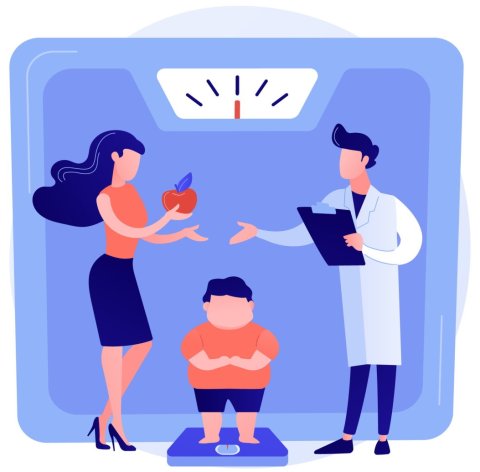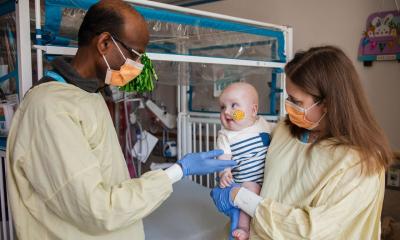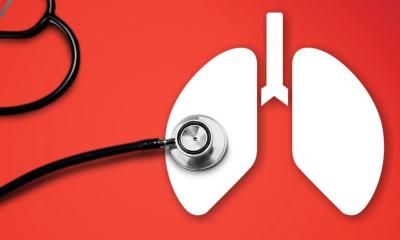News • Medication and surgery recommendations
Childhood obesity guidelines: the end of 'watchful waiting'
Millions of children and teens worldwide live with a common chronic disease that has been stigmatized for years and is associated with serious short and long-term health concerns when left untreated, including cardiovascular diseases and diabetes.

Image source: Adobe Stock/Visual Generation
The disease is obesity, and it can be treated successfully with the recognition that complex genetic, physiologic, socioeconomic, and environmental factors are at play, according to the American Academy of Pediatrics (AAP). The AAP has published its first comprehensive guidance in 15 years that highlights more evidence than ever that obesity treatment is safe and effective. Evidence-based recommendations on medical care for those age 2 and older are included within a new “Clinical Practice Guideline for the Evaluation and Treatment of Children and Adolescents With Obesity,” published in Pediatrics. The guideline is accompanied by an executive summary and two technical reports, “Appraisal of Clinical Care Practices for Child Obesity Treatment. Part I: Interventions,” and “Appraisal of Clinical Care Practices for Child Obesity Treatment. Part II: Comorbidities.”
“Weight is a sensitive topic for most of us, and children and teens are especially aware of the harsh and unfair stigma that comes with being affected by it,” said Sarah Hampl, MD, a lead author of the guideline, created by a multidisciplinary group of experts in various fields, along with primary care providers and a family representative. Research tells us that we need to take a close look at families - where they live, their access to nutritious food, health care and opportunities for physical activity -as well as other factors that are associated with health, quality-of-life outcomes and risks. Our kids need the medical support, understanding and resources we can provide within a treatment plan that involves the whole family,” said Dr. Hampl, chair of the Clinical Practice Guideline Subcommittee on Obesity.
There is no evidence that ‘watchful waiting’ or delayed treatment is appropriate for children with obesity
Sandra Hassink
The AAP guideline contains key action statements, which represent evidence-based recommendations for evaluating and treating children with overweight and obesity and related health concerns. These recommendations include motivational interviewing, intensive health behavior and lifestyle treatment, pharmacotherapy and metabolic and bariatric surgery. The approach considers the child’s health status, family system, community context, and resources. The guideline discusses increased risks for children with special health care needs, as well as inequities that promote obesity in childhood, such as the marketing of unhealthy food, low socioeconomic status and household food insecurity. The role of structural racism has played in obesity prevalence is also discussed.
Overweight is defined as a body mass index (BMI) at or above the 85th percentile and below the 95th percentile for children and teens of the same age and sex. Obesity is defined as a BMI at or above the 95th percentile for children and teens of the same age and sex.
The guideline does not discuss obesity prevention, which will be addressed in another forthcoming AAP policy statement. The AAP describes the role of a primary care physician – or medical home -- in overseeing intensive and long-term care strategies, ongoing medical monitoring, and treatment of youth with obesity. “There is no evidence that ‘watchful waiting’ or delayed treatment is appropriate for children with obesity,” said Sandra Hassink, MD, an author of the guideline and vice chair of the Clinical Practice Guideline Subcommittee on Obesity. “The goal is to help patients make changes in lifestyle, behaviors or environment in a way that is sustainable and involves families in decision-making at every step of the way.”
Key action statements guide physicians on how to evaluate children and teens for obesity. The AAP also recommends:
- Comprehensive obesity treatment may include include nutrition support, physical activity treatment, behavioral therapy, pharmacotherapy, and metabolic and bariatric surgery.
- Intensive health behavior and lifestyle treatment (IHBLT), while challenging to deliver and not universally available, is the most effective known behavioral treatment for child obesity. The most effective treatments include 26 or more hours of face-to-face, family-based, multicomponent treatment over a 3- to 12-month period.
- Evidence-based treatment delivered by trained health care professionals with active parent or caregiver involvement has no evidence of harm and can result in less disordered eating.
- Physicians should offer adolescents ages 12 years and older with obesity weight loss pharmacotherapy, according to medication indications, risks, and benefits, as an adjunct to health behavior and lifestyle treatment.
- Teens age 13 and older with severe obesity (BMI ≥120% of the 95th percentile for age and sex) should be evaluated for metabolic and bariatric surgery.
The AAP encourages strong promotion of supportive payment and public health policies that cover comprehensive obesity prevention, evaluation, and treatment. The guideline calls for policy changes within and beyond the health sector to improve health and wellbeing of children. Policy changes should address structural racism that drives alarming and persistent disparities in childhood obesity, according to the guideline’s executive report. “The medical costs of obesity on children, families and our society as a whole are well-documented and require urgent action,” Dr. Hampl said. “This is a complex issue, but there are multiple ways we can take steps to intervene now and help children and teens build the foundation for a long, healthy life.”
Source: American Academy of Pediatrics
12.01.2023








